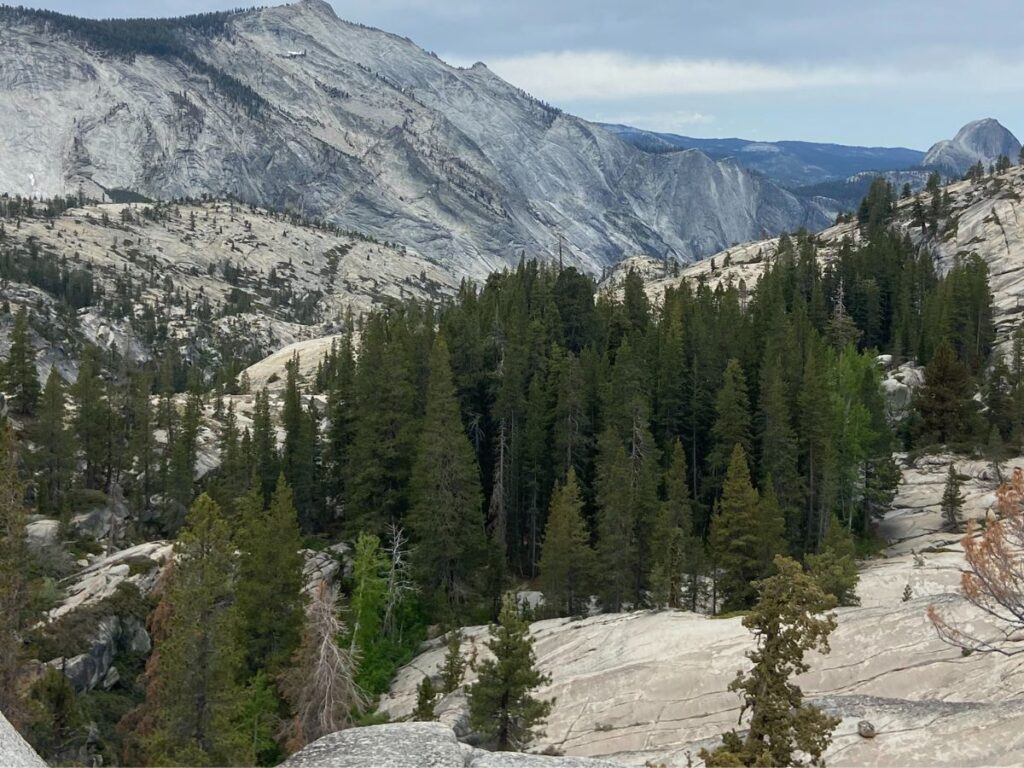Yosemite National Park, one of America’s most iconic natural landmarks, is a testament to the raw beauty and untouched wilderness of California’s Sierra Nevada mountains. Covering an impressive 1,187 square miles, this UNESCO World Heritage site is home to a wide array of wildlife, ancient giant sequoias, vast meadows, and some of the highest waterfalls in North America. Its significance doesn’t end with its natural wonders; Yosemite has played a pivotal role in the national park movement, inspiring many to advocate for the protection and preservation of America’s wild spaces.
For those residing in or visiting Los Angeles, the sprawling urban landscape may seem worlds away from the tranquility of Yosemite. Yet, the allure of the park’s serene vistas and unmatched outdoor activities is compelling enough to beckon countless travelers each year. Planning a trip from Los Angeles to Yosemite is more than just a journey across the state; it’s an opportunity to swap the city’s hustle and bustle for nature’s serene majesty, even if just for a few days. With the right guidance and information, this transition can be seamless, setting the stage for an unforgettable adventure.
Distance and Duration
Traveling from Los Angeles to Yosemite National Park presents a variety of options, each with its own unique advantages and considerations. Here’s a detailed look at the most common modes of transportation to help you make an informed decision.

By Car
The journey from Los Angeles to Yosemite covers approximately 300 miles. Taking the most direct route via the US-395 N and CA-41 N, travelers can expect a drive time of roughly 5 to 6 hours under normal traffic conditions. However, this can vary depending on factors such as roadwork, peak travel seasons, and chosen route.
By Public Transportation
While direct public transportation from Los Angeles to Yosemite is limited, there are feasible routes:
Amtrak: You can take the Amtrak train from Los Angeles to Merced, which typically takes around 5-6 hours. From Merced, the Yosemite Area Regional Transportation System (YARTS) provides buses to the park, with a journey time of roughly 2 hours.
Bus: Greyhound has services to Merced, followed by the YARTS connection to Yosemite. This combined journey can vary but typically ranges from 7 to 9 hours in total.
By Air
For those looking to reduce travel time, flying is an option:
Fresno Yosemite International Airport (FAT): Located about 95 miles from Yosemite Valley, this is the closest commercial airport to the park. Several airlines operate flights from Los Angeles to Fresno, typically taking just over an hour. From Fresno, visitors can rent a car or utilize available shuttle services to reach Yosemite.
Merced Regional Airport (MCE): A bit closer to Yosemite but with limited flight options, the flight from Los Angeles to Merced generally takes a little under an hour. From here, similar to the train option, YARTS can be utilized to get to the park.
While flying might be faster in terms of air time, additional factors such as check-in, security checks, waiting times, and ground transportation from the airport to the park may increase the overall travel duration.
Route Options
When driving from Los Angeles to Yosemite National Park, travelers have choices depending on their priorities. Whether speed or scenery is the aim, there’s a route to fit every preference.
Direct Route via Highways
The most direct route typically involves taking the I-5 North from Los Angeles to CA-99 North, then transitioning to CA-41 North, which leads directly into Yosemite. This route is well-maintained and frequently traveled, making it suitable for all vehicle types. It passes through various towns and cities, so amenities are conveniently accessible.

Scenic Routes
For those not in a rush and looking to absorb California’s diverse landscapes, a scenic route is the way to go:
Route via US-395: After heading north on I-5, take US-395 North through Owens Valley. This route offers views of the Eastern Sierra mountains and takes you near attractions like Mono Lake before you enter Yosemite from the east via Tioga Pass (CA-120). Do note that Tioga Pass is seasonally closed due to snow, typically from November to late May.
Road Conditions: The US-395 is well-maintained, but the stretch through Tioga Pass can be challenging in colder months.
Tolls: No tolls are associated with this scenic route, but always keep updated with the latest road information.
Essential Stops Along the Way
Driving long distances requires occasional breaks for refueling, both for the car and oneself. Here are some notable stops to consider:
Gas Stations
- Bakersfield: Roughly 2 hours from Los Angeles, it offers multiple refueling options.
- Fresno: Another 1.5 hours from Bakersfield, it’s a significant city before the final stretch to Yosemite.
- Oakhurst: Located just an hour from Yosemite’s southern entrance, it’s the last major refueling point.
Food and Restrooms
- Bakersfield: With numerous dining options, from fast food to sit-down restaurants, travelers have choices to suit all tastes.
- Fresno: As a major city, it boasts a variety of cuisines and restaurant types.
- Oakhurst: A smaller town with a mix of local eateries and popular chains.
Points of Interest
- Bravo Farms in Traver: A quirky stop that offers a mix of antiques, homemade food, and a mini-golf course.
- Forestiere Underground Gardens in Fresno: A unique underground network of gardens and rooms built over 40 years.
- Bass Lake near Oakhurst: A picturesque spot ideal for a quick photo or a relaxing break.

Best Time to Visit
Visiting Yosemite National Park can be a transformative experience, but the time of year you choose to explore can greatly influence the nature of your adventure.
Spring (April to June): The park starts to thaw after winter, and you’ll witness impressive waterfalls, blooming wildflowers, and relatively fewer crowds.
Summer (July to September): A popular time for families due to school vacations. Expect warm temperatures, but also larger crowds. It’s the ideal time for high-country hikes as most of the park’s areas are accessible.
Fall (October to early November): As crowds thin out, the fall foliage paints the park in stunning colors, making it a photographer’s dream. Temperatures start to drop, especially in the evenings.
Winter (December to March): Much of the park is covered in snow, presenting opportunities for winter sports like snowshoeing and skiing. However, note that several roads, including Tioga Pass, are closed during this season.
Seasonal Attractions and Weather Conditions
Spring: Powerful waterfalls resulting from snowmelt. The valleys are lush and green.
Summer: High-altitude regions like Tuolumne Meadows become accessible. Warm, dry days are perfect for hiking and camping.
Fall: Colors change, offering breathtaking views. Cooler temperatures can be expected.
Winter: Badger Pass Ski Area opens for skiing and snowboarding. The park takes on a serene, snowy landscape, but visitors should be prepared for road closures and chilly temperatures.
Accommodation Near Yosemite
When it comes to lodging around Yosemite National Park, visitors have an array of choices catering to different preferences and budgets.
Hotels
- Tenaya Lodge: Located just outside the south entrance, this hotel offers amenities like a spa, indoor pool, and guided tours.
- Evergreen Lodge at Yosemite: Positioned near the park’s Big Oak Flat entrance, it boasts cabin accommodations, a saltwater pool, and recreational activities.
- Yosemite Valley Lodge: Conveniently situated within the park, this lodge provides easy access to Yosemite Falls.
Campgrounds
Yosemite offers 13 campgrounds. Some are reservable in advance while others operate on a first-come, first-served basis.
- Upper Pines Campground: Located in Yosemite Valley, it’s open year-round and provides access to several hiking trails.
- Tuolumne Meadows Campground: A high-altitude site that’s perfect for those wanting a cooler retreat in the summer.
- Camp 4: Famed among rock climbers, this Yosemite Valley campground operates on a lottery system for most of the year.

Vacation Rentals
If you’re seeking a more home-like environment or traveling with a larger group, vacation rentals can be an excellent choice.
Airbnb: Several listings around Yosemite offer everything from cozy cabins to expansive homes. Towns like Mariposa, Oakhurst, and Groveland have multiple options.
VRBO: Another platform with diverse rental options surrounding the park, catering to various group sizes and preferences.
When considering accommodations, it’s essential to book well in advance, especially during peak seasons, to secure the best options.
Park Admission and Permits
When planning a visit to Yosemite National Park, it’s crucial to be aware of the admission costs and any required permits.
Necessary Permits
Wilderness Permits: Required for overnight stays in the Yosemite Wilderness. They’re crucial for preserving the experience and minimizing human impact. Permit quotas are in place for each trailhead, so it’s advisable to reserve in advance, especially for popular trails.
Half Dome Permits: If you aim to hike the Half Dome cables, a special permit is mandatory due to the hike’s popularity and challenges. They are distributed via a lottery system.
Packing Tips
Embarking on a journey to Yosemite National Park requires thoughtful packing to ensure a comfortable and memorable trip. Here’s a guide to help you with your packing endeavors.
Essentials to Carry for a Yosemite Trip
- Maps, compass, and if possible, a GPS.
- Refillable water bottles or hydration packs. Remember, staying hydrated is paramount.
- Carry energy-rich snacks like trail mix, granola bars, and jerky.
- Including bandages, antiseptics, pain relievers, and any personal medication.
- Multi-purpose Tool or Knife can be helpful in various situations.
- Headlamps or flashlights with extra batteries.
- Sunglasses, sunscreen, and a wide-brimmed hat.
- Personal Identification & Necessary Permits.
Clothing Suggestions Based on Seasons
- Spring: Layered clothing, waterproof boots for snowmelt, and rain gear.
- Summer: Lightweight clothing, but pack a sweater or jacket for cooler evenings. Sturdy hiking shoes are a must.
- Fall: Warm layers, jackets, and hats. Expect cooler temperatures, especially in the mornings and evenings.
- Winter: Heavy winter wear including waterproof jackets, insulated boots, gloves, scarves, and thermal layers.

Safety Tips
In Yosemite’s vast wilderness, safety should always be a priority. Here are some key pointers to ensure a secure experience.
- Venturing off can lead to dangerous situations and environmental damage.
- Weather can change rapidly, so always be prepared.
- Feeding or approaching wildlife can be harmful to both you and the animals.
- Stream currents can be stronger than they appear. Be cautious near water bodies, especially during the spring melt.
- Adhere to fire restrictions and always fully extinguish campfires.
- Some areas in Yosemite are at a high altitude. If you feel dizzy or have trouble breathing, consider descending to a lower elevation.
Emergency Contact Information
In the event of an emergency, it’s crucial to know whom to contact:
- Dial 911.
- For non-emergencies, you can reach out to the park dispatch at (209) 379-1992.
- Always let someone know your itinerary and when you expect to return, and it’s a good idea to check-in at ranger stations if you’re embarking on a lengthy hike.
Key Takeaways
- Yosemite National Park is a pristine wilderness, boasting waterfalls, giant sequoias, and diverse wildlife. Traveling from Los Angeles requires thorough planning.
- The journey from Los Angeles to Yosemite is roughly 300 miles, with various transportation options including car, public transport, and air.
- Multiple routes can be taken, with direct highways for quick travel or scenic paths for breathtaking views. Essential stops include gas stations, dining options, and intriguing points of interest.
- Each season offers a unique Yosemite experience. Late spring and early summer are highly recommended, providing a blend of pleasant weather and active waterfalls.
- A wide range of accommodations are available, from hotels and campgrounds to vacation rentals like Airbnb.
- Yosemite offers activities like hiking, water sports, and wildlife viewing. Admission fees and certain permits are required for specific activities.
- Proper packing ensures comfort, with clothing suggestions varying by season. Prioritize safety by staying on marked trails, maintaining a respectful distance from wildlife, and being aware of the park’s emergency contacts.
FAQs
- What’s the fastest route from Los Angeles to Yosemite?
The most direct route is via US-395 N and CA-41 N, typically taking about 5 to 6 hours. - Are there public transportation options from Los Angeles to Yosemite?
Yes, you can take Amtrak to Merced followed by a YARTS bus to Yosemite, or a Greyhound bus to Merced with the same YARTS connection. - What are the nearest airports to Yosemite National Park?
The closest airports are Fresno Yosemite International Airport (FAT) and Merced Regional Airport (MCE). - What’s the best time of year to visit Yosemite?
Late spring and early summer are ideal for waterfalls and good weather, while fall offers stunning foliage. - Do I need any special permits for Yosemite?
Wilderness permits are required for overnight backcountry trips, and Half Dome hikers need a special permit. - Can I visit Yosemite in the winter?
Yes, but prepare for snow, limited access, and winter driving conditions, as some roads and facilities are closed. - Are there any scenic routes from Los Angeles to Yosemite?
Yes, taking US-395 through Owens Valley offers stunning views of the Eastern Sierra and passes near attractions like Mono Lake. - What are the camping options in Yosemite?
Yosemite has 13 campgrounds, including Upper Pines, Tuolumne Meadows, and Camp 4, with varying reservation policies. - How long should I plan to stay in Yosemite to enjoy the park fully?
A minimum of three days is recommended to explore the major sights and partake in activities, but longer stays allow for a deeper experience.
